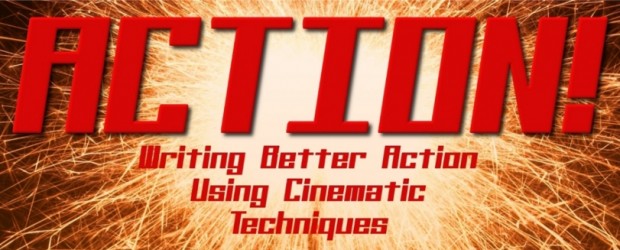I’ve already hinted at this in prior posts. At its most basic level, an action scene involves two characters: the Hero (the narrator or focal character of the narrative) and the Opponent. The Hero is, of course, who your story is about. The Hero has a goal of some kind, and the Opponent has a goal which opposes it. That opposition creates the conflict which is the root of all action scenes (and indeed, all fiction). Without an Opponent, there can’t be any conflict except the Hero’s internal conflict, and that type of conflict cannot be resolved through action scenes.
When I say Opponent, I don’t necessarily mean it has to be another character. If your Hero has to defeat a series of mechanical traps that will try to kill him before he reaches the Golden Cup of Valhalla (or whatever), those traps are Opponents; their goal is to kill him, while the Hero’s goal is to survive. Opposite goals equals conflict equals action.
The problem with using non-character Opponents is that their goals can’t change in response to the actions of the Hero. In the example above, if the Hero decides to forgo the traps and the Golden Cup to go party with Heidi the Valkyrie instead, the traps can’t get angry and come after him. If you want real excitement and drama in your action scenes, Opponents should be characters. Let’s look at the four essential types of conflict in literature and why three of them don’t really work as a basis for action scenes.
Character vs. Self
This type of conflict stems from a character having a problem with him- or herself. This makes for compelling drama and loads of introspection. Unfortunately, what it doesn’t lend itself to is action. Unless you’re going to have your character beating himself to a pulp in a bathroom, internal conflicts just aren’t resolved by the external means of action scenes. Let’s let our poor, conflicted characters figure themselves out and move onward to the next kind.
Character vs. Society
At first glance, this might seem to work well for the basis of an action scene. Your character is fighting against something about his society. Doesn’t that make him a rebel, prone to action? Well, no, not really. In this type of narrative conflict, the characters’ issues are with social norms, mores, and other cultural factors. You can’t really write a character having a fistfight with racism, for example. That’s not the same as battling agents of society, but that’s a different type of conflict.
Character vs. Nature
Now we’re getting somewhere. How many movies have this as their basis? It can be very exciting, watching characters as they flee molten lava, tornadoes, earthquakes, meteors, etc. There’s room for lots of spectacle and insane action as Nature pushes on its merciless course. The main issue with this type of conflict when it comes to action scenes is the fact that Nature is not only merciless, but has no antipathy toward the characters. It may seem like the avalanche is trying to kill the characters, but the fact is that forces of Nature happen whether the characters are in the way or not. Yes, it can create action, but an essential element of a true action scene is missing: the goal of the Opponent. Nature has no goals; Nature only exists. While this kind of conflict can sustain a story for awhile, eventually the reader will want to see a clear Opponent for the Hero—one whose goals work against the Hero. Overcoming Nature is possible but nowhere near as rewarding as overcoming an active Opponent.
Character vs. Other
This is the meat and potatoes of the action scene. When a character or group of characters enters into some kind of direct conflict with another character or group of characters (or machines, or zombies, or genius biker punks—you get the picture!), it becomes the catalyst for action scenes. In fact, all the other types of narrative conflict can make a story better if you can make the ultimate conflict personal: Hero versus Opponent.
Say your Hero is suffering from a mental disorder that is causing him to question his every move, paralyzing him. Okay, that’s great, but if he discovers the root cause of his problem is that he was imprisoned and brainwashed by a sinister organization, he now has an identifiable Opponent, which makes his eventual victory (we hope!) much sweeter. Rebels against the Evil Empire is a noble cause, but when they’re battling the Empire’s top military commander, it becomes a personal conflict.

Great food for thought. When you talked about battling the traps, I immediately thought of that scene in Star Wars II, when Anakin and Padme and the droids were in the droid factory on the conveyor belts. It was exciting, but there were no living opponents. Which is why the droids were probably there, for humor. And always in man vs. nature flicks there's always a human opponent – the mayor